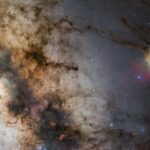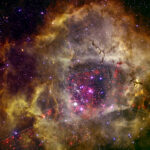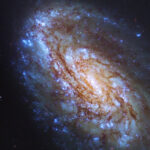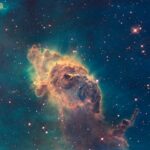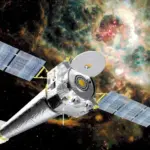In June 2024, astronomers captured this James Webb Space Telescope Image Of The Serpens Nebula, which shows shockwaves caused by jets from young stars colliding with cosmic gas and dust.
The Serpens Nebula, located 1 300 light-years from Earth, is home to a particularly dense cluster of newly forming stars (around 100 000 years old), some of which will eventually grow to the mass of our Sun.
This region has been home to other coincidental discoveries, including the Flapping ‘Bat Shadow’, which earned its name when 2020 Data from the NASA/ESA Hubble Space Telescope revealed it to flap, or shift. This feature is visible at the centre of the Webb image.
To the right of the ‘Bat Shadow’ lies another intriguing feature—an eye-shaped crevice, which appears as if a star is bursting through. However, astronomers say looks may be deceiving here. This could just be where gases of different densities are layered on top of one another, similar to what is seen in the famous Pillars of Creation.
And to the right of that, an extremely dark patch could be a similar occurrence. The gas and dust here are so dense in comparison to the rest of the region that no near-infrared light gets through.
Image description: A rectangular image with black vertical rectangles at the bottom left and top right that indicate missing data. A young star-forming region is filled with wispy orange, red, and blue layers of gas and dust. The upper-left corner of the image is filled with mostly orange dust, and within that orange dust are several small red plumes of gas that extend from the top left to the bottom right, at the same angle. The centre of the image is filled with mostly blue gas. At the centre, there is one particularly bright star that has an hourglass shadow above and below it. To the right of that is what looks like a vertical eye-shaped crevice with a bright star at the centre. The gas to the right of the crevice is a darker orange.
Credit: NASA, ESA, CSA, STScI, K. Pontoppidan (NASA’s Jet Propulsion Laboratory), J. Green (Space Telescope Science Institute)





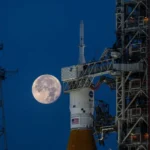




![Space Streams - Nebula [Ambient] image](https://space-streams.com/wp-content/uploads/2024/11/space-streams-nebula-150x150.png)






